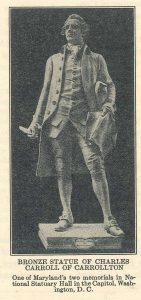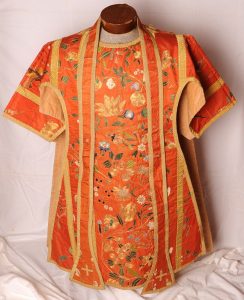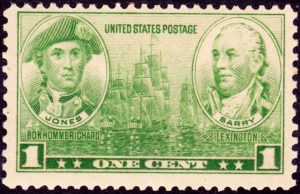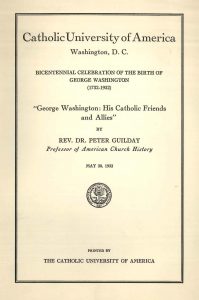
Americans celebrating their independence from Great Britain on the Fourth of July seldom remember Catholic contributions to the national cause. This is not surprising, as Catholics made up only an estimated one percent of the population of the nascent republic. Colonial America was generally prejudiced against Catholics and, with the notable exception of Pennsylvania, had enacted various civil and legal restrictions. As the American Revolution loomed, The Quebec Act of 1774 especially inflamed fears of an authoritarian alliance between the British Crown and the Vatican Pontiff to crush American liberties. Nevertheless, many Catholics rose to prominence in the front ranks of freedom’s struggle, despite their status as a distrusted and often proscribed minority.

Among these Catholic Patriots of the Revolution were three remarkable members of the prominent Carroll family of Maryland. The preeminent Catholic patriot was Annapolis-born Charles Carroll of Carrollton (1737-1832), who risked both his liberty and fortune as the only Catholic to sign the Declaration of Independence. His cousin, John Carroll (1735-1815), born in nearby Upper Marlboro, was an ex Jesuit and one of the few Catholic priests in Maryland who would became the first American bishop in 1789. His story is told in the December 19, 1957 issue of the Treasure Chest comic book.
As patriots and Catholics, Charles and John answered the call of the Continental Congress to join Benjamin Franklin and Samuel Chase on an unsuccessful mission in 1776 to convince Catholic Quebec in Canada to remain neutral. John’s older brother, Daniel Carroll (1730-1796), served in the Continental Congress, signing the Articles of Confederation, and was one of only two Catholic signers of the U.S. Constitution, the other being Irish-born, Philadelphia merchant, Thomas Fitzsimons (1741-1811). Other important Catholic contributors include another Irish-born Philadelphia merchant, Stephen Moylan; Casimir Pulaski and Tadeusz Kosciuszko of Poland; and, of course, George Washington’s famed friend and protégé, the Marquis de Lafayette of France.

Perhaps the most significant Catholic military contributions to the war came from another Irish born merchant from Philadelphia, John Barry (1745-1803). Along with his more famous friend and compatriot, John Paul Jones (1747-1792), Barry was a co-founder of American sea power. He was the first commissioned officer in the Continental Navy, the first to capture a British war vessel at sea, fought on land at the battles of Trenton and Princeton, authored an effective signal book for ships’ communication, fought the last naval battle of the war in 1783, and was President George Washington’s choice to head the U.S. Navy when formally created in 1794. Barry’s exploits are colorfully recounted in the June 8, 1961 issue of the Treasure Chest comic as well as several statues and memorials, the most recent being at the U.S. Naval Academy in Annapolis in 2014.

President Washington paid tribute to American Catholics in 1790 as “faithful subjects of our free Government.” American Catholics have honored him and preserved the Catholic patriotic record, especially historian John Gilmary Shea (1822-1892), whose tireless research resulted in a multi-volume history of Catholics in the United States. In 1932, as part of the bicentennial of Washington’s birth, the National Catholic celebration on Memorial Day at The Catholic University of America (CUA) welcomed nearly 60,000 at a military field mass and was broadcast nationally on radio. The celebrant, Michael J. Curley, Archbishop of Baltimore and CUA Chancellor, wore the pectoral cross of Bishop Carroll. Finally, the American Bishops’ Committee on the Bicentennial in 1976 promoted ‘Liberty and Justice for all,’ an approach neither too adulatory nor too critical of American History.
On a personal note, I would like to pay tribute to one of my Patriot Catholic ancestors, the English born Thomas Ignatius Adams (1735-1776), an early settler at the Jesuit mission of Conewago in Pennsylvania and a soldier of the French and Indian War as well as the American Revolution.

Great story. A postscript re Charles Carroll: He was the last of the Declaration signers to die. Catholic school textbooks later in the nineteenth and into the twentieth century made a great deal of this fact. Surely, it was a sign of God’s favor that the Catholic signer outlived everybody else.
Washington’s aide de camp John Fitzgerald, Old Town Alexandria, VA
As a fellow grandchild of Thomas I Adams, I wish I knew you were at CUA while my son was there 2015-2019!